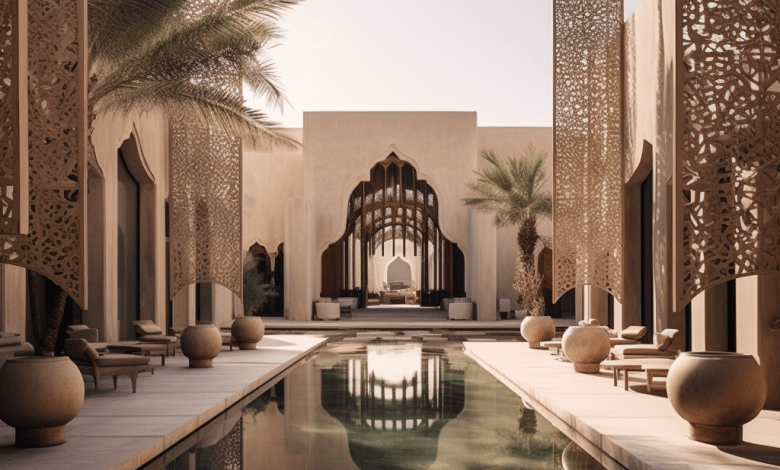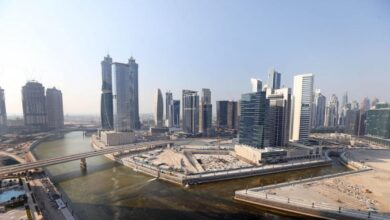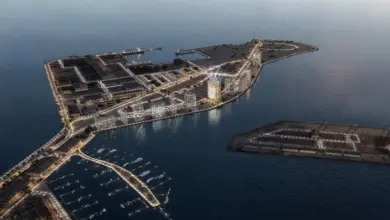
- The Gulf region's architectural styles are influenced by a rich cultural heritage.
- Traditional elements such as wind towers, courtyards, and domes reflect the region's historical customs and response to the harsh desert environment.
- Islamic design principles, including geometric patterns and intricate ornamentation, are prominent features in Gulf architecture, especially in mosques.
- The maritime history of the Gulf has influenced the design of coastal houses, incorporating natural ventilation and protection from sea winds.
Blending Cultural Heritage and Contemporary Designs in Gulf Architecture
The architectural landscape of the Gulf region is a mesmerizing fusion of tradition and modernity, showcasing a captivating blend of indigenous customs and contemporary aesthetics. With a rich cultural heritage that spans centuries, the Gulf countries have developed a unique architectural style that reflects their historical influences and aspirations for the future. From the timeless charm of traditional designs to the bold statements of cutting-edge structures, Gulf architecture stands as a testament to the region’s deep-rooted traditions and its embrace of innovative design principles.
Historically, the nomadic lifestyle of the Arabian Peninsula played a significant role in shaping the architectural traditions of the GCC. The harsh desert environment necessitated the development of structures that could withstand extreme temperatures while providing shade and ventilation. As a result, traditional Gulf architecture adopted design elements such as thick walls, wind towers (known as “barjeel” in Arabic), and courtyards, which helped to mitigate the intense heat and create comfortable living spaces.
One of the most iconic features of Gulf architecture is the majestic domes and minarets that adorn many mosques in the region. These architectural elements draw inspiration from Islamic design principles, which emphasize geometric patterns, calligraphy, and intricate ornamentation. The grand mosques, such as the Sheikh Zayed Grand Mosque in Abu Dhabi or the Sultan Qaboos Grand Mosque in Muscat, serve as awe-inspiring examples of how cultural heritage can be preserved and celebrated through architecture.
Another cultural influence on Gulf architecture is the rich maritime history of the region. The Gulf’s coastal communities have long relied on fishing and pearl diving for sustenance and trade. This maritime heritage is reflected in the design of traditional houses found in coastal towns and villages. The “barasti” or palm frond houses of Bahrain, for instance, feature intricate lattice work and coral stone construction, which provide natural ventilation and protection from the harsh sea winds.
The advent of globalization and rapid economic growth in the GCC region has ushered in a wave of modernization and urban development. However, rather than abandoning their cultural roots, architects and urban planners have recognized the importance of incorporating traditional elements into contemporary designs. This approach has given rise to a unique architectural style that combines modern aesthetics with a deep respect for cultural heritage.
In contemporary Gulf architecture, one can witness a harmonious integration of traditional design elements with cutting-edge technology and sustainable practices. Architects often use materials such as coral stone, gypsum, and mud bricks, reminiscent of traditional construction techniques, to create buildings that pay homage to the region’s cultural identity. Additionally, contemporary buildings often feature modern interpretations of wind towers, allowing for natural ventilation and reducing the reliance on energy-intensive cooling systems.
Beyond residential and religious structures, the GCC region has also witnessed the development of ambitious architectural projects that serve as iconic landmarks. The Burj Khalifa in Dubai, for example, blends Islamic architectural motifs with state-of-the-art engineering to create the world’s tallest building. The Museum of Islamic Art in Doha, designed by renowned architect I.M. Pei, showcases a fusion of contemporary design principles with Islamic architectural traditions, creating a visual masterpiece that celebrates the region’s rich cultural heritage.
Furthermore, events such as the Dubai Expo and the Qatar World Cup have provided opportunities to showcase the architectural prowess of the GCC region on a global stage. These international exhibitions have spurred architects to push the boundaries of design, creating innovative and sustainable structures that capture the essence of Gulf culture while meeting the demands of the future.
The architectural landscape of the GCC region is a testament to the rich cultural heritage that has shaped the Gulf’s identity. The fusion of traditional and contemporary elements in Gulf architecture serves as a reminder of the region’s deep-rooted traditions while embracing the advancements of the modern world. By incorporating indigenous design elements,





